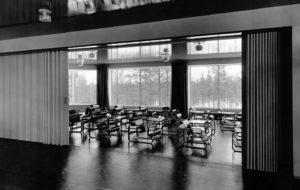
It was announced in September that director Joseph Kosinski is to remake the much-loved 1982 Disney film Tron. On the surface, Tron is ideal fodder for a remake. It is undeniably dated, and maintains a devout if small cult following. But on a deeper level, a Tron remake is destined to fail. No remake could match the enormous and lasting importance and influence of the original. Tron was a technological milestone and a cultural breakthrough that cannot be replicated. It was the first mainstream depiction of virtual reality.
As a story, Tron is an almost direct match for the hoary old swords, sand and sandals epic Ben Hur. A rebel-saviour figure is enslaved, forced to fight for his life in a gladiatorial arena and beats the system; only in Tron, most of the action takes place inside a computer simulation and the system is the Master Control Program, an artificial intelligence. But Tron is perhaps best remembered for its groundbreaking use of computer visual effects. Disney was always a technological pioneer in animation, and has pursued a sideline in futurism since the 1950s.
Tron carried on this tradition, using computers to an unprecedented degree to create whole wireframe landscapes and polygonal solids. This was far from labour-saving, as computer animation was not yet fully up to the job; instead the machines created stills that were run together with traditional animation techniques. Today, the results look unsophisticated to say the least, but in 1982 it was a revelation – according to the Hollywood Reporter, the children who were inspired by the film to enter the field of computer visual effects are now, as adults, queuing up to work on the remake.
So Tron was trailblazing in how it was made, but it was perhaps far more influential in what it portrayed. How does one visualise what is going on inside a computer? Its literal insides, devoid of moving parts except for cooling fans, are no help. We know that it is essentially maths, but maths is abstract at anything above simple arithmetic. So we draw parallels with more familiar processes and give computers human attributes. We think of them as thinking, as having personalities that range from helpful friend to implacable enemy. We design our interfaces to resemble tools hundreds of years old – desktops laid with documents, cursors that take the form of little pencils or paintbrushes, folders, wastepaper bins.
The networking of computers added another layer of abstraction. The internet does not exist in any one place, it is not on one particular computer; it is simultaneously everywhere and nowhere. But we imagine it as a place – cyberspace – which can be portrayed as a virtual landscape. The word “cyberspace” was coined in 1984 by author William Gibson, who described the “consensual hallucination” of the network with sufficient poetry to be considered the spiritual father of the internet. Gibson’s massive influence notwithstanding, Tron got there first.
It was an allegory of the workings of software, with programs represented by people performing tasks, subroutines as tools and vehicles, memory as a landscape. It gave computers an inner life rich with stories, drama, conflict and even emotion. It made the abstract seem real. But it also touched upon how virtual reality could improve on the real thing – that it was an environment unbounded by limitations such as the laws of physics, where everything could be manipulated and altered. The young people it inspired became the young professionals who designed and built the internet and drove the world-changing high-tech boom of the 1990s.
But, more importantly, Tron also aided the mainstream acceptance of computers and the exponential growth of Western computer literacy, firing the imaginations and aspirations of the millions of users and consumers without whom the boom could never have happened. Tron pulled off an impressive trick: it simultaneously demystified computers, and made them magical.


















